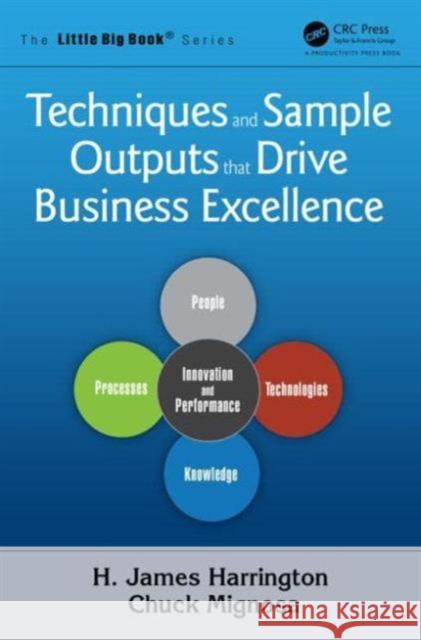Techniques and Sample Outputs That Drive Business Excellence » książka
topmenu
Techniques and Sample Outputs That Drive Business Excellence
ISBN-13: 9781466577268 / Angielski / Miękka / 2015 / 326 str.
Techniques and Sample Outputs That Drive Business Excellence
ISBN-13: 9781466577268 / Angielski / Miękka / 2015 / 326 str.
cena 213,26
(netto: 203,10 VAT: 5%)
Najniższa cena z 30 dni: 201,44
(netto: 203,10 VAT: 5%)
Najniższa cena z 30 dni: 201,44
Termin realizacji zamówienia:
ok. 22 dni roboczych
Bez gwarancji dostawy przed świętami
ok. 22 dni roboczych
Bez gwarancji dostawy przed świętami
Darmowa dostawa!
Many organizations are looking for that magic tool or methodology that will suddenly transform them into outstanding organizations. Unfortunately, there is no one right answer for all organizations or even for a single organization. Successful organizations skillfully integrate the appropriate improvement approaches with honesty, commitment, and constancy of purpose across all levels of management.
This book, part of The Little Big Book series, discusses the most common set of tools and methodologies used in managerial, strategic planning, project selection, and organizational improvement projects that are referred to throughout The Little Big Book series. It presents, in a concise no-nonsense format, the concepts and techniques that must be mastered by project managers and anyone tasked with managing an improvement project. The tools covered in this book include affinity diagrams, brainstorming, cause-and-effect diagrams, the Kano model, organizational process improvement, Pareto analysis, project management, risk management, root cause analysis, storyboarding, value propositions, and workflow diagrams. Because of the large number of tools and techniques covered, the book supplies concise operating guidance for each tool that is adequate to prepare readers to understand and use that tool. It also includes examples of how the tools are used. The book provides a basic understanding of the tools you need to improve the processes you are currently using to manage your organization and, ultimately, to improve the quality, productivity, and agility of the products or services you are delivering to your customers. The tools presented in this book are the essential tools that all organizations should be using. By understanding and using the tools covered in this book, you will possess a better overall understanding of the way your organization needs to function in today's increasingly competitive environment. This book is designed to supplement and provide additional direction in the use of the methodologies defined in the other books in The Little Big Book series










